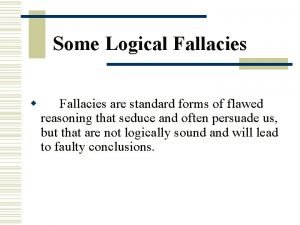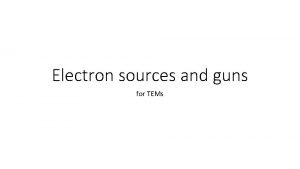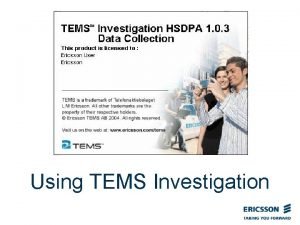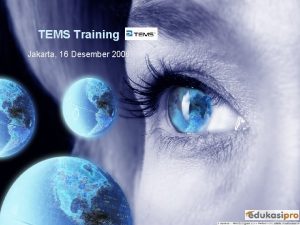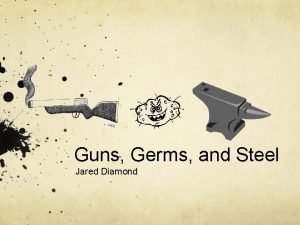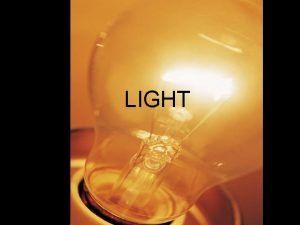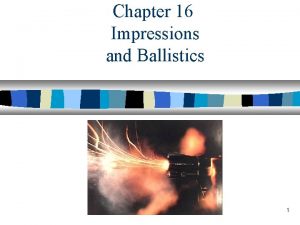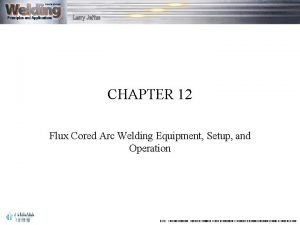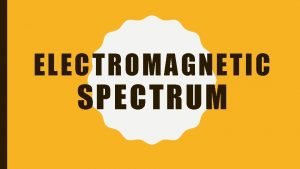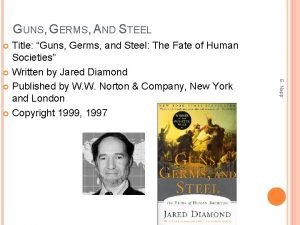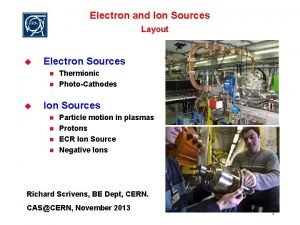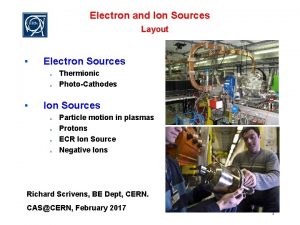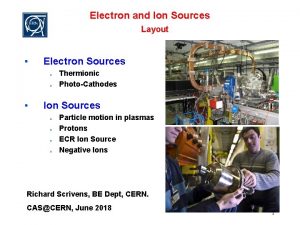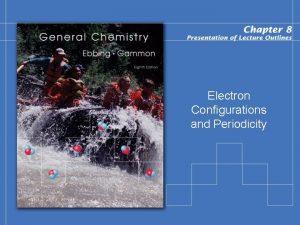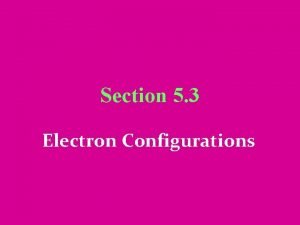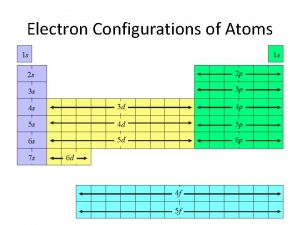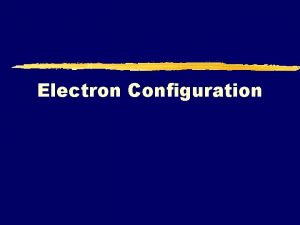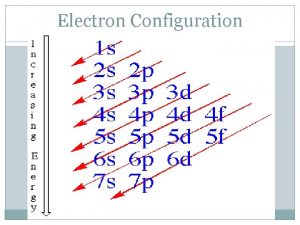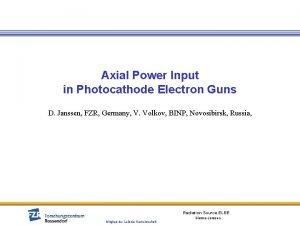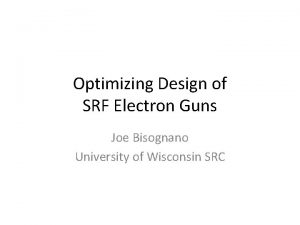Electron sources and guns for TEMs Different sources




















- Slides: 20

Electron sources and guns for TEMs

Different sources • Electron source affects image quality • Best available sources need to be used • Two types of sources • Thermionic • Modern sources are lantanum hexaboride La. B 6 crystals, older are tungsten filaments • Field-emission (FE) sources • Fine tungsten needles • Carbon nanotubes are researched as alternative • Most advanced TEMs use FE sources, but most use still thermionic sources

Principles of electron sources • Thermionic sources produces electrons when heated • FE sources produce electrons when large electric potential is applied • FE source works as cathode • TEMs can use only one type of electron source • FE sources are monocromatic than thermionic sources • Emission varies with crystal orientation of the source • Best orientation for tip of La. B 6 crystal is <110> and <310> for tungsten crystalline tip

Thermionic emission •

Field emission •

Electron beam – brightness •

Electron beam – brightness • For thermionic sources Β increases linearly with accelerating voltage • Higher value of β allows more electrons to be put into beam of given size • More information can be generated from specimen • Sensetive spesimen can be damaged more easily • Electron density can be increased by using brighter source • This shortens exposure time minimizing image drift and instabilities

Electron beam – coherency •

Electron beam – coherency •

Electron beam – stability • Stable high-voltage supply to source is needed • Also electron current from the source must be stable • Intensity on screen varies if system is not stable • Thermionic sources are very stable • Variations < ± 1 % • Better UHV conditions improve stability • Summary about electron source and beam • Important properties for sources: brightness, temporal coherency, energy spread, spatial coherency and stability

Electron guns • Electron guns are needed to be able to control the electron beam • Source is incorporated into a gun assembly • Assembly acts as focusing lens to electron beam • Different designs for thermionic and FE sources

Electron guns – thermionic • The La. B 6 crystal source works as cathode • Cathode is in grid called Wehnelt cylinder • Anode is at earth potential • Cable is used to attach cathode to high-voltage supply • Metal wire such as rhenium is bonded to La. B 6 crystal • Wire is used to resistively heat source causing thermionic emission • To control electron beam, small negative bias is applied to Wehnelt cylinder • This converges electrons to a point called crossover

Electron guns – thermionic • The gun is designed to increase Wehnelt bias with increase of emission current • This is called self-biased gun • When increasing the current to heat source does not increase emission current, saturation condition is achieved • Thermionic sources should be operated just below saturation as operating above it, will reduce lifetime of source without any advantage • Brightess is also optimized when operating at saturation • Standard way of achieving saturation is to look at TEM screen for the image of source crossover

Electron guns – thermionic • La. B 6 crystals should be operated just below saturation • This will increase lifetime of source without compromising signal • La. B 6 crystals can break due to thermal shock if heated or cooled too rapidly • TEM computer often controls heating and cooling • Aligning the source may need to be done but sources are usually prealigned • Most modern TEMs have electronic corrections to ensure alignment • Only adjustments the user has to do to gun are alignment and saturation

Field emission gun (FEG) • FEGs are much simpler than thermionic guns • When switched on, the extraction voltage must be increased slowly • Risk of fracturing tip by thermo-mechanical shock • Rest of the steps are computer controlled • FEG has two anodes • First anode has extraction voltage to pull electrons out of the tip • Second anode accelerates electrons to right potential • Two anodes of FEG work as electrostatic lens

Field emission gun (FEG) • CFE requires clean surface without contaminants or oxide • Contaminants build on the tip, even in UHV conditions • Contaminants are necessary to be removed bt flashing the tip • Potential can be reversed to blow off the surface layers of atoms • Tip can be quickly heated to ~5000 K to evaporate the contaminants • Most CFE guns do flashing automatically • Contaminants cause emission currents to decrease and extraction currents to increase

Guns compared • La. B 6 crystals current densities are higher than that of tungsten, also brightness is significantly grater and operating temperature is lower • La. B 6 sources are smaller resulting in better cohenrency and energy spread • In FEGs, the current densities are even greater • Brightness is correspondingly high • FEGs are best when brightness and coherency is required • Brightness of FEG at 100 k. V is significanlty greater than that of La. B 6 source at 400 k. V • CFE has best spatial coherency without monochromation • TFE provides greater stability and less noise • CFE requires UHV and is cleaner

Guns compared • TFE tip is cleaned thermally, causing lower stress on tip compared to flashing and resulting in longer lifetime of the source • FEG source is too small for relatively low magnification (<50 – 100 000 X), La. B 6 source is better in these circumstances

Usable potential • The k. V axiom: • ”You should operate at the maximum available k. V (unless you shouldn’t). ” • Usually highest possible potential should be used • • However, high potential beam could cause damage to some specimen Displacement damage threshold for most metals is less than 400 k. V While studying crystalline specimen by diffraction contrast, lower is better Below 100 k. V is not practical for most materials • High potential should be uset to • • • Get greatest brightness Get shortest wavelength to get better resolution Heating effects may be smaller due to less inelastic scatter Observing thicker specimens Peak to background ratio is improved

Summary • Most TEMs use thermionic emission with La. B 6 sources • Operating just below saturation optimizes image quality and source lifetime • Operate at the highes possible potential • Use FEG TEM for best resolution • High coherency is important for high resolution imaging • If source have to be changed, aligned or saturated, treat it carefully
 Logical fallacies exercise
Logical fallacies exercise Electron guns tem
Electron guns tem How to use tems investigation
How to use tems investigation Tems swp
Tems swp 16 desember 2006
16 desember 2006 Tems data collection
Tems data collection Tulane ems
Tulane ems Yali guns germs and steel
Yali guns germs and steel 1914 took a little trip
1914 took a little trip Guns germs and steel worksheet
Guns germs and steel worksheet Ole beich
Ole beich Guns germs and steel summary
Guns germs and steel summary Print sources of information
Print sources of information Ghaffir guns
Ghaffir guns Red martians invade venus using x ray guns
Red martians invade venus using x ray guns Impression evidence
Impression evidence What does the fca flux provide to the weld
What does the fca flux provide to the weld Guns for hands twenty one pilots
Guns for hands twenty one pilots Cardinal survey and design
Cardinal survey and design Raging martians invade venus
Raging martians invade venus Guns per 100 people
Guns per 100 people
